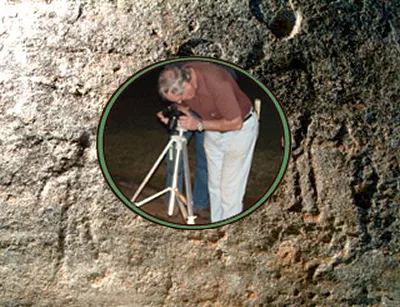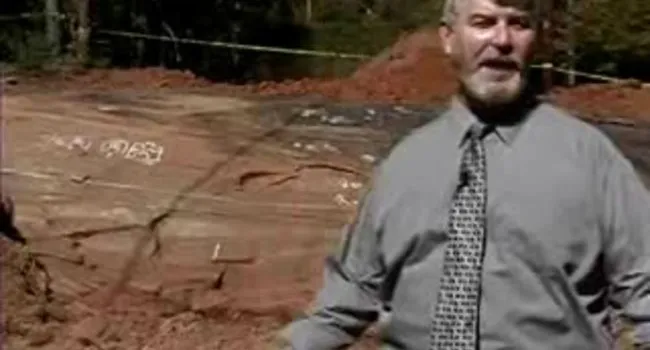
Video
The Hagood Mill Historical site occasionally serves as a gathering place for Native American people in the upstate. With its operating grist mill typical of 18 th -19 th century America, and newly...
Petroglyphs, often called "rock art," are line carvings, etchings or drawings on stone that are commonly attributed to prehistoric people. Rock art is found in thousands of sites across America. The search for the meanings behind these images often leads to more questions than answers as petroglyph images may predate written and oral histories.
In 2004, University of South Carolina Archaeologist Tommy Charles, the Pickens County Museumn and a team of volunteers unearthed a group of petroglyphs on a rock outcrop in Pickens, South Carolina. Tommy and other archaeologists now struggle to understand the culture and ideas behind these mysterious images. Are they sacred motifs, historical records or artistic expressions?

Video
The Hagood Mill Historical site occasionally serves as a gathering place for Native American people in the upstate. With its operating grist mill typical of 18 th -19 th century America, and newly...
Video
The stone outcrop at the Hagood Mill Historical site contains prehistoric rock art as well as a few not-so rare messages likely carved in the 19th or 20th centuries. Archaeologist Tommy Charles...
Video
Archaeologists reconstruct past lives by collecting and examining evidence such as tools, art objects and other material signs of culture. Finding the meaning behind the petroglyphs is the next step...
Video
Rock art at the Hagood Mill site is open to many interpretations. Is the imagery sacred, documentation of historic events, part of a simple amusement, or of a larger pictographic language? The answer...
Video
Hundreds, possibly thousands, of years of weathering and erosion rendered the Hagood Mill site petroglyphs invisible to the naked eye. Amateur archaeologist Mike Bramlett discovered several of the...